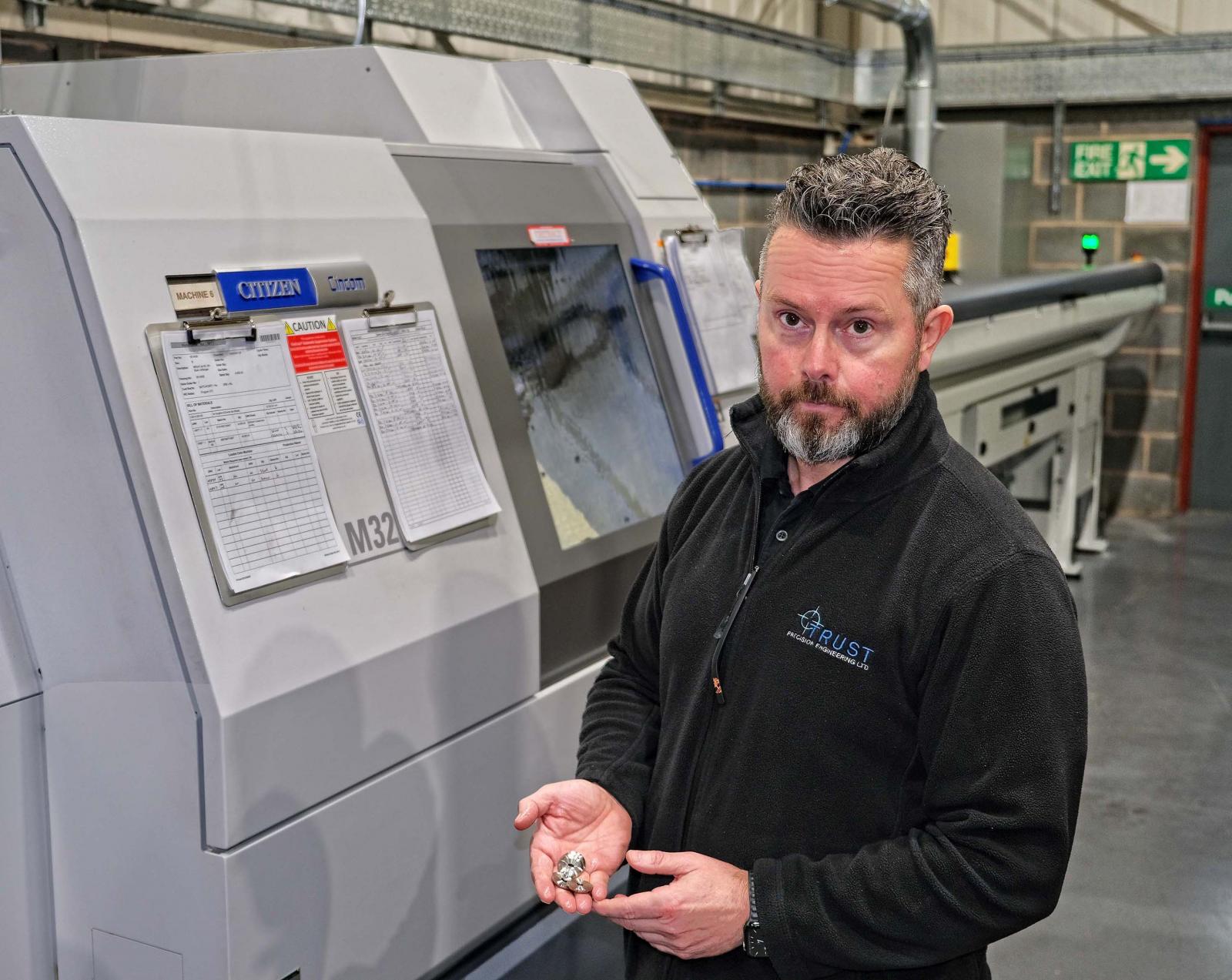
When the pandemic hit demand in the aerospace sector Trust Precision was able to quickly move to take on new work in the medical sector.
Over the past decade, Managing Director Nick Street has driven the growth of Trust Precision in Eastwood, near Nottingham, which has become one of the leading providers in the Midlands of sliding-head turn-milled components. He said, "With a can-do attitude and living up to our slogan 'where reputation is everything', we have established ourselves as a benchmark for quality and reliability."
Last year the company recently installed a 20 mm bar capacity Citizen L20-XII with a programmable B-axis and the manufacturer's low frequency vibration (LFV) chip breaking software, and this came into its own last year.
Until the pandemic took hold in early 2020, up to 60% of turnover at Trust was derived from aerospace contracts, but the proportion is more like one-third of that now. The current shortfall in commercial aerospace work, due to Covid-19, has been largely offset by winning new business, primarily from the medical industry. The fall-off in work from the aerospace sector has presented the opportunity to focus more on training, which had been identified as the crucial element for the future development of the business. Mr Street commented that Covid-19 has been a benefit in this respect, giving the company the opportunity to focus more on this important element for the development of the business.
Fortuitously, the presence on the shop floor of the L20-XIILFV meant that its superior chip breaking ability could be harnessed for more efficient turning of medical parts from stainless steel bar. The material normally forms stringy swarf that wraps itself around the component and tooling, risking damaging both, but programmable LFV avoids the problem by breaking the swarf into a short, manageable length.
In the case of an early medical job whose dimensional tolerances needed to be within ± 25 µm, LFV was switched on for about 25% of the cycle. After 1,000 components had been produced, there was no swarf damage to components or tool breakage, even though a 0.8 mm diameter hole was being drilled and reamed in the reverse end of the part.
Mr Street continued, "LFV is a must if you are buying a Citizen lathe that offers the option. It is a major technological advance, the more so because it can be activated by the part program. So the slightly lower metal removal rate during LFV can be restricted to those elements of the cutting cycle that benefit most from the chip control.
"Although the volume of our aerospace work diminished at the start of last year, just after we acquired the L20, the machine is proving useful for fulfilling medical contracts. The benefits will be felt even more in the future as the aviation sector recovers, as the stainless steels, titanium alloys and plastics we turn-mill for those customers all benefit from the chip breaking technology."